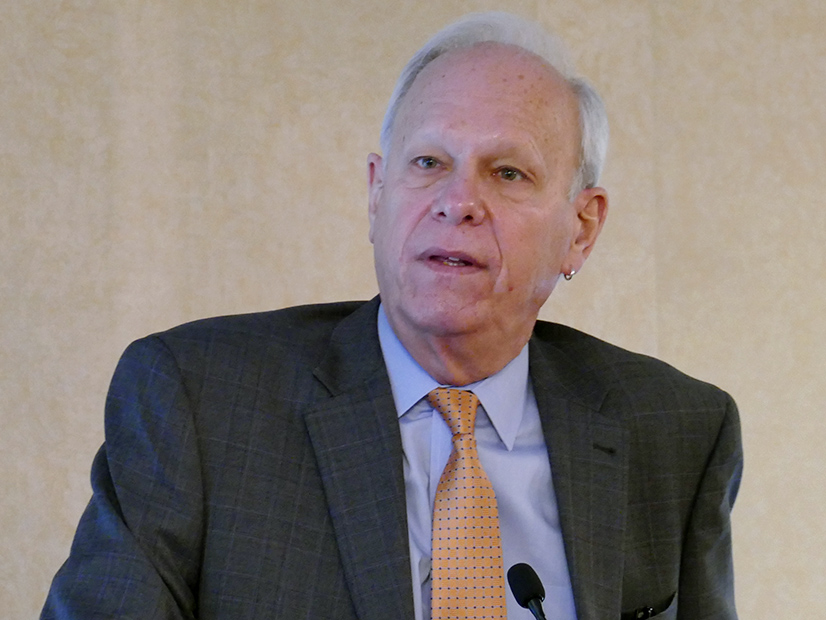Maryland’s greenhouse gas emissions in 2020 were 32% below 2006 levels, according to the state Department of the Environment, besting its goal of a 25% cut.
The 2016 Greenhouse Gas Emissions Reduction Act (GGRA) requires the agency to publish updated inventories of statewide greenhouse gas emissions every three years. Mark Stewart, climate change program manager for MDE, disclosed preliminary figures for 2020 at Wednesday’s quarterly meeting of the Maryland Climate Change Commission.
“2020 transportation emissions were significantly lower than likely they would have been without shutdowns related to COVID,” he said. “So, backing out the COVID impacts, the reduction would probably be in the ballpark of a 28% reduction from 2006 levels.”
The agency will share final inventory numbers with the commission this summer, he added. These inventories draw on statewide activity data from agriculture, fossil fuel combustion, industrial processes, natural gas transmission and distribution, transportation, solid waste and wastewater treatment.
The Climate Solutions Now Act (SB 0528), which became law April 8, resets the state’s emissions-reduction goals to 60% below 2006 levels by 2031 and net zero by 2045. That’s half as large as the GGRA goals, which mandated a 40% reduction in emissions from 2006 levels by 2030. (See Md. Climate Change Comm. Chasing New State Law’s Ambitious Goals.)
Addressing the Climate Change Commission Wednesday, state Sen. Paul Pinsky (D) said that much of this year’s spate of climate change legislation was informed by the commission’s work. Pinsky said he and other authors of the legislation included “broad goals and examples of policies we should follow,” but he acknowledged that what’s in the text “won’t get us there.”
“We need bold actions,” he said.
Expanding on this point afterward, Pinsky said in an email, “We’ll need to: move large numbers of people out of their cars; make a huge jump in EVs [electric vehicles]; likely increase existing building emission reductions; hope for advances in improved battery storage, among other things.”
During the meeting, he noted that the question of building electrification, which is the focus of one of the commission’s working groups, “was a center of the discussion in Annapolis.”
Requiring all future buildings to be electrified “was debated hotly and for a very long time,” though it didn’t end up being included in the text, he said. Instead, the new law calls for the Building Codes Administration to study and make recommendations on the building electrification. (See Md. Climate Bills Become Law Without Hogan’s Signature.)
“That issue won’t go away,” Pinsky cautioned.
Commission Has Its Work Cut Out for It
The 60% reduction goal “will not be an easy lift, as Secretary [of the Environment Ben] Grumbles has said,” Pinsky added. “The bill wasn’t as strong as I may have liked, but does put us in the top tier, the top two, three or four states in the country.” Other states will be looking to copy features of the 2022 law, he predicted.
Pinsky and Del. Dana Stein (D) both stressed the need to focus on transportation in future years. Collaboration and partnership will be necessary “to help us meet our aggressive but necessary climate goals in terms of transportation,” R. Earl Lewis, Jr., Maryland’s deputy transportation secretary for policy, planning and enterprise services, said.
The new law requires the commission to establish four new working groups: Just Transition Employment and Retraining; Energy Industry Revitalization; Energy Resilience and Efficiency; and Solar Photovoltaic Systems Recovery, Reuse and Recycling.
Michael Powell, co-chair of the commission’s Mitigation Working Group, said there is a “need for coordination” among the increased number of working groups because “there is a lot of overlap, or at least actions that could come into conflict.” Overlapping group membership could help prevent a situation where working groups might differ on whether certain actions are possible or not, he suggested.


